The
Making
of a
Pandemic
The initial days in Wuhan will remain a mystery until scientific research can pinpoint when, where, and how did the novel coronavirus move from one species to another. But till then, we can rely on events that took place at the epicentre in Wuhan. We have assembled the key moments, arranged them chronologically, and added visual cues to create an immersive timeline.

T
has allowed very little information to pass through, leaving the entire world, guessing what went on in China just moments before the
pandemic. Despite the intense scrutiny of both media networks and governments around the world, it is still not clearly understood just how the disease spread so silently and so quickly. Citizen journalists and traditional media have posited a myriad of theories and heart-breaking narratives. It has kept nearly 8 billion people on edge, causing unprecedented human and economic loss. As the world readies itself to accept a new normal (of living with a contagion), we all stand at a pivotal juncture, and it is essential for us to look at how we got here. What transpired in the last week of December 2019 and days leading up to the lockdown in Wuhan? We have collected and organised critical pieces of information after sifting through various media reports, research papers, and data visualisations. Please scroll down to have a look, and to avoid errors, we recommend you switch off any ad-blockers.
Oops you are on the wrong device! We request you to access this page on your computer, tablet or laptop. We appreciate your support.
17 NOVEMBER
PATIENT ZERO?
A look at the data reveals that the earliest case could be traced back to November 17, 2019. Subsequently, there were nine more cases in November, but none confirmed as patient zero. According to the World Health Organisation (W.H.O.), the first confirmed case was on December 8 and an article in the medical journal - Lancet points to December 1 2019, as the 'symptom onset date of the first patient.'


10 DECEMBER
MYSTERY VIRUS
On December 10, a local shrimp seller, Ms. Wei Guixian, at the Huanan seafood market, started to feel sick. She consulted a few local clinics and doctors, but her situation did not improve. A week later, she went into the emergency room of Xiehe Hospital, barely able to move. Subsequently, research shows (February 20, 2020) that about 1 to 5 locals, like the 55-year-old Ms Wei, were reporting to hospitals with symptoms that had an uncanny similarity with hers. By December 20, the figure was rising in double digits daily, and the count officially had reached close to 60.
27 DECEMBER
FIRST SIGNS OF TROUBLE
On December 27, Dr Zhang Jixian, the head of the respiratory department at the Hubei Provincial Hospital, raised the alarm about patients with a mystery flu. Then she had no clue about how devastating that would turn out to be. She recounts those early days in this interview.

Photo: Xinhua/Shen Bohan
30 DECEMBER

FIRST ALARM MUZZLED
Dr. Ai Fen, at the emergency department at Wuhan Central hospital, received a lab result that would leave her stunned. It mentioned the words "SARS Coronavirus." She circled the words, took a picture, and sent it to former medical school classmates. The photo spread like wildfire in the medical peer groups, and as the Guardian reported, 'it became the first piece of evidence of the outbreak.'
One of the doctors, Dr. Li Wenliang, an ophthalmologist shared the info on a group called 'Wuhan University Clinical o4'. The panel on the left shows how the chat went, which has been expunged by the authorities in China. But in a hyper-connected world, there is always a digital imprint that can be traced back.
An internal circular was released by the Wuhan Health Commission: 'There has been a continuous occurrence of pneumonia cases of unknown cause at Huanan Seafood Wholesale Market.' The circular asked all medical staff to report cases of this mysterious Pneumonia.
31 DECEMBER
WUHAN ADMITS CRISIS
The Wuhan Health Commission informs the W.H.O. local office that cases of Pneumonia of unknown aetiology (unknown cause) have been detected in the city of Wuhan in Hubei Province of China confirming 27 cases. The local Centre for disease control and prevention asks people not to go to enclosed public places or gather. It suggested wearing face masks when going out.


Video Courtesy: CGTN
3 JANUARY
DR. WENLIANG REPRIMANDED
Dr. Wenliang and seven others in the Wechat group are reprimanded. He is summoned to the police station and was charged with ‘spreading rumours online; and ‘severely disrupting social order’. He is forcibly asked to acknowledge his ‘misdemeanour’ and is asked to promise, not to commit further ‘unlawful acts’.

9 JANUARY
CHINA REPORTS FIRST DEATH
Wuhan Health Commission issues notice that there are 41 cases of Pneumonia with new coronavirus infection, of which 7 are severe cases and 1 dead. The remaining patients were reported to be stable.
Dr. Li Wenliang went back to work and started treating his patients. He picks up the virus from one of his patients and becomes sick.
1 JANUARY
HAPPY NEW YEAR!
While the rest of the world was bringing in the new year, health officials in Wuhan, shut down the Huanan Seafood Market without any prior notice or clarification, leaving the 11 million citizens of the city in utter confusion. At that point, there were 27 cases officially quarantined with seven in critical condition. Those in close contact with these patients were also being monitored. A massive disinfection exercise was also conducted at the market the next day.

4 JANUARY
"BATLADY" FINDS NEW CORONAVIRUS
Wuhan-based virologist Shi Zhengli, along with her team, identify the novel coronavirus. Zhengli says, "bat-borne coronaviruses will cause more outbreaks. We must find them before they find us." Zhengli and her team, later submit a research paper which was published on February 3 2020:
"Previous studies have shown that some bat SARS-related coronaviruses (SARSr-CoVs) can potentially infect humans. Here we report the identification and characterization of a new coronavirus (2019-nCoV), which caused an epidemic of acute respiratory syndrome in humans in Wuhan, China. The epidemic, which started on 12 December 2019, had caused 2,794 laboratory-confirmed infections including 80 deaths by 26 January 2020. 'Bat-borne' coronaviruses will cause more outbreaks."

Image is representative.

19 JANUARY
BAIBUTING BANQUET
At least 10 people contracted COVID-19 after attending the Baibuting Banquet and attributed another 30 infections to local media networks. The Thousands Households Banquet took place at the city's Baibuting neighbourhood, which is home to about 130,000 people. Despite the outbreak, tens of thousands attended the annual feast. People began to fall sick soon after visiting the banquet, and as a result, 57 residential blocks within the community – each home to about 14 families – were subsequently designated "fever" buildings.
12 JANUARY
GENETIC SEQUENCE MADE PUBLIC
A Shanghai lab had isolated and fully sequenced the genome data of the virus by January 5. The data was shared on the 12th, on virological.org, an open platform for discussions, and GenBank, an open-access data repository, welcoming researchers to download, share, use and analyse the data. W.H.O. said it will be of great importance for other countries to use in developing specific diagnostic kits.

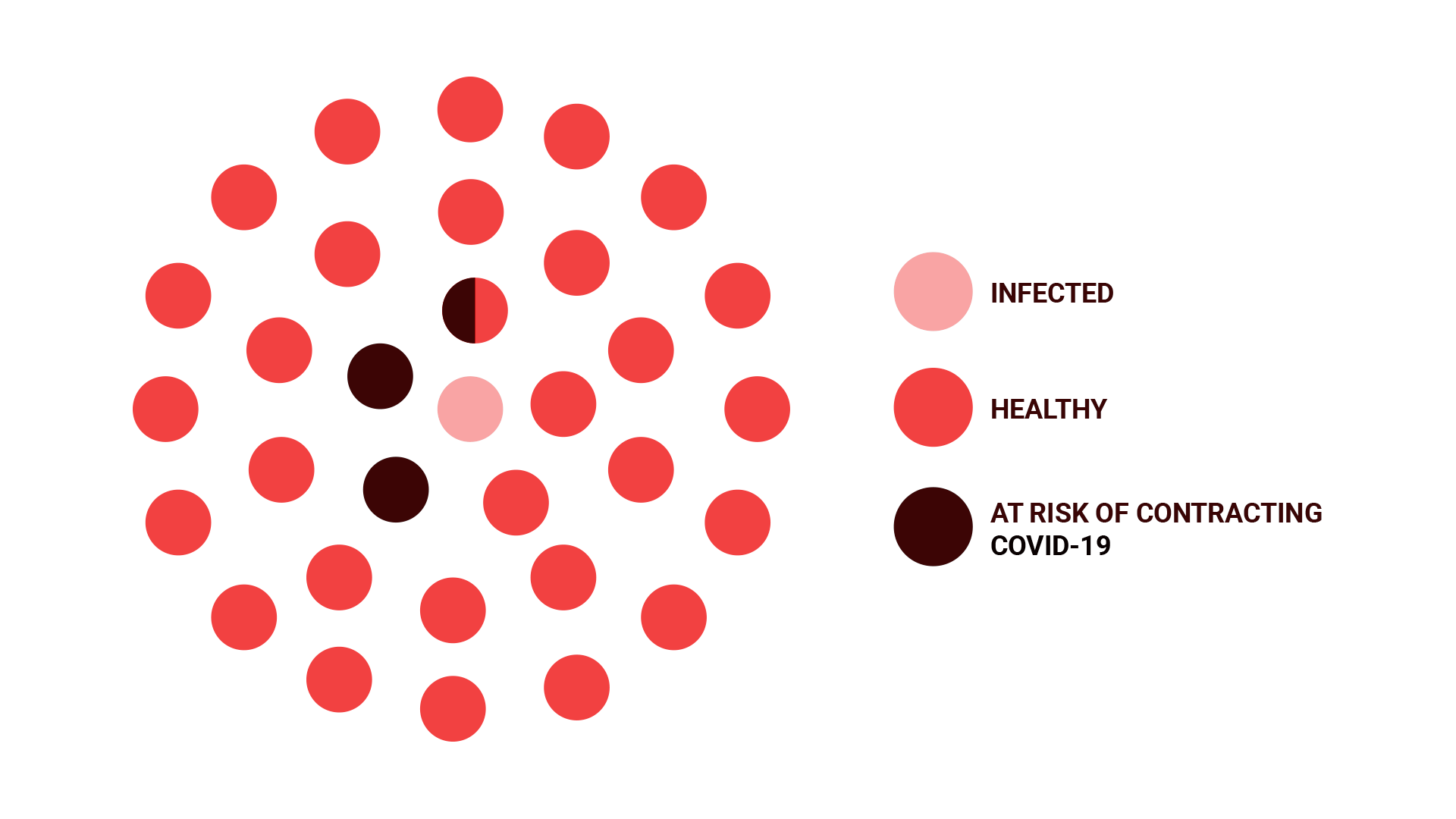
21 JANUARY
HUMAN-TO-HUMAN TRANSMISSION
Pulmonologist Nanshan Zhong announces that the new coronavirus is being transmitted from humans to other humans. Confirmed cases outside mainland China started to emerge in Japan, South Korea, and Thailand. The first confirmed case in the United States came the next day in Washington State, where a man in his thirties developed symptoms after returning from a trip to Wuhan. Scientists use "R-naught" or R0, to estimate how many other people one sick person is likely to infect. As of February 28, 2020, R0 for COVID 19 is 2-2.5.

22 JANUARY
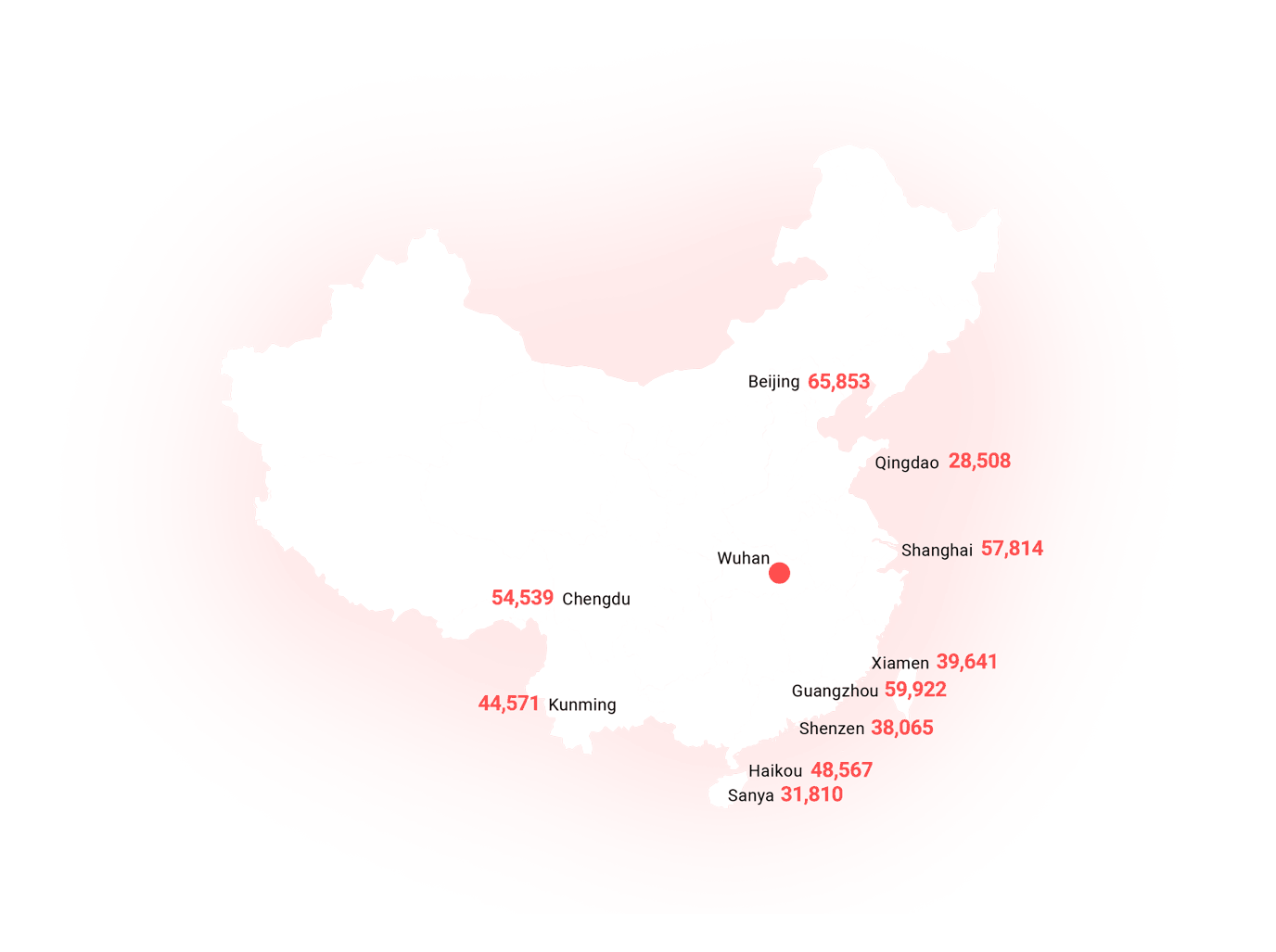
THE CHUNYUN CHURN
Chunyun is a 40-day window during the Chinese Lunar New Year when people travel in and out of mainland China to be with their families. It is the world's biggest annual migration of people, with an estimated 3 billion journeys to be made this year. An estimated $74 billion was spent just on travel during last year's spring festival.
During the migration period this year, Jan 20-22 and Jan 31-Feb 1 were the peak days. Wuhan's mayor, Zhou Xianwang, said about five million residents left Wuhan before the lockdown. 300,000 people left by trains on the 22nd itself.
New York Times estimates that the actual size of the outbreak was much larger in December, with an invisible network of nearly 1000 cases or even more. 1,75,000 people left the city on the new year's day itself, and with Lunar New Year festivities, the departures bound to have increased in the following weeks. They say about seven million left Wuhan before travel was restricted.
DOMESTIC CITIES WITH MOST ARRIVALS FROM WUHAN
30 DEC 2019 TO 22 JAN 2020 | FlightRadar - CGTN
RELATIVE RISK OF CASE IMPORTATIONS FROM HIGH RISK CITIES IN MAINLAND CHINA | Data: WorldPop (University of Southampton
The first case to travel out of mainland China was most likely on December 26 and an exponential spike in the three days between December 31 to January 2. A total of 41 travel-related cases were confirmed by January 27, all coming from China. 21 were imported to Asia, six to North America, five to Oceania, and three to Europe. Thirty of them were from Wuhan.
In the event of one infected person travelling to Europe, the risk of importation is the highest for the U.K. at 25%, Germany at 16%, and France at 13%.
The travel lockdown in Wuhan only delayed epidemic progression by 3 to 5 days within China, but it significantly reduced the case imports at the international level by 80% until mid-February. But, the churn had already begun.

Click on the tab below to see the contribution to the relative risk of importation from the 10 Chinese cities with the highest rates of the disease until 22 Jan 2020 (left) and after the Wuhan travel ban from 23 Jan to 1 Mar 2020 (right). The listed countries are the 20 countries at the greatest risk of case importation. Flows are proportional to the relative probability that a single imported case will travel from a given origin to a specific destination. For the full research article visit the Science Magazine.
Relative risk was preliminary defined as the percentage of airline travelers received by each city out of the total volume of travelers leaving 18 high-risk cities based on air travel data from February to April 2018 obtained from the International Air Travel Association (IATA). The Lunar New Year in 2018 started form Feb 16, 2018.
23 JANUARY
WUHAN LOCKDOWN
Wuhan announces city-wide lockdown. At 10 am, the city of 11 million people was placed under lockdown. Surrounding areas followed, putting more than 50 million people under home quarantine. There was a complete ban on all transport links. Bus stations, subway network, water transport, airport and train stations were all suspended. The announcement was made at 2 pm, a day before.
23 JANUARY
NEW HOSPITAL ANNOUNCED
China starts building emergency hospitals. Huoshenshan is an emergency speciality field hospital constructed from January 23 to February 2, 2020, in response to the 2019–20 coronavirus pandemic. State broadcaster CCTV LIVE streamed the construction site of Huoshenshan and Leishenshan hospital. On January 28, around 18 million concurrent views were recorded.

Video: CGTN / Youtube

Video: CGTN / Youtube
30 JANUARY
GLOBAL HEALTH EMERGENCY
W.H.O. declares a global health emergency amid the outbreak in China. Acknowledging that the novel-coronavirus poses risks to countries beyond its origin and requests countries for a coordinated international response.
24 JANUARY
CHINA SUSPENDS WILDLIFE TRADE
China temporarily bans trade and consumption of wild animals. Meanwhile, a science journal writes there could be no connection between the Huanan seafood market and COVID-19 using data published by the Lancet in a paper called - Clinical features of patients with 2019 novel coronavirus in Wuhan China.
Symptom onset of the first patient onset is on December 1 and had no connection with the Huanan Seafood Market.
There were three more cases on December 10, and two of them had no relation to the Huanan Seafood market.
Out of the 5 cases on December 15, two had no link with the Huanan seafood market, plus the fact that no one sold bats at this market.
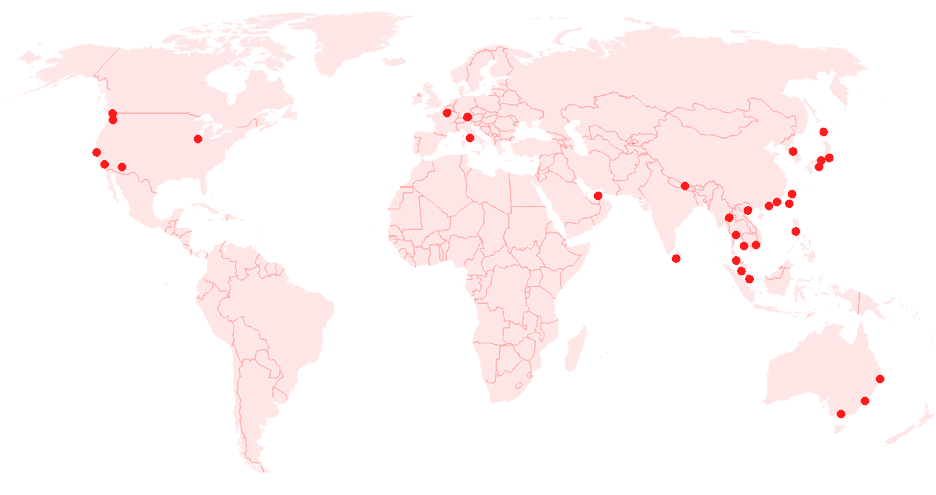
4 FEBRUARY
DIAMOND PRINCESS
The outbreak on the cruise ship was first detected when an 80-year-old passenger tested positive for the virus on February 1, a week after disembarking in Hong Kong (refer: animated illustration on the right). By February 4, the remaining 3,700 passengers and crew of the luxury Diamond Princess ship was docked at Yokohama, Japan. On February 20, a three-day operation started to offload passengers who tested negative for the virus. About 700 people who had been infected remained onboard. The guests' disembarkation was finally completed on February 27.

9 FEBRUARY
31 JANUARY
COVID-19 GRIPS THE WORLD
An outbreak in 30 cities in 26 countries. Global cases rise to 9900, according to Johns Hopkins University. Two days later on 2nd February, the first coronavirus related death was recorded outside China. A 44-year-old Chinese man from Wuhan, the capital of Hubei province died in a hospital in Manila. His travel partner, also from China, was too tested positive for the virus.
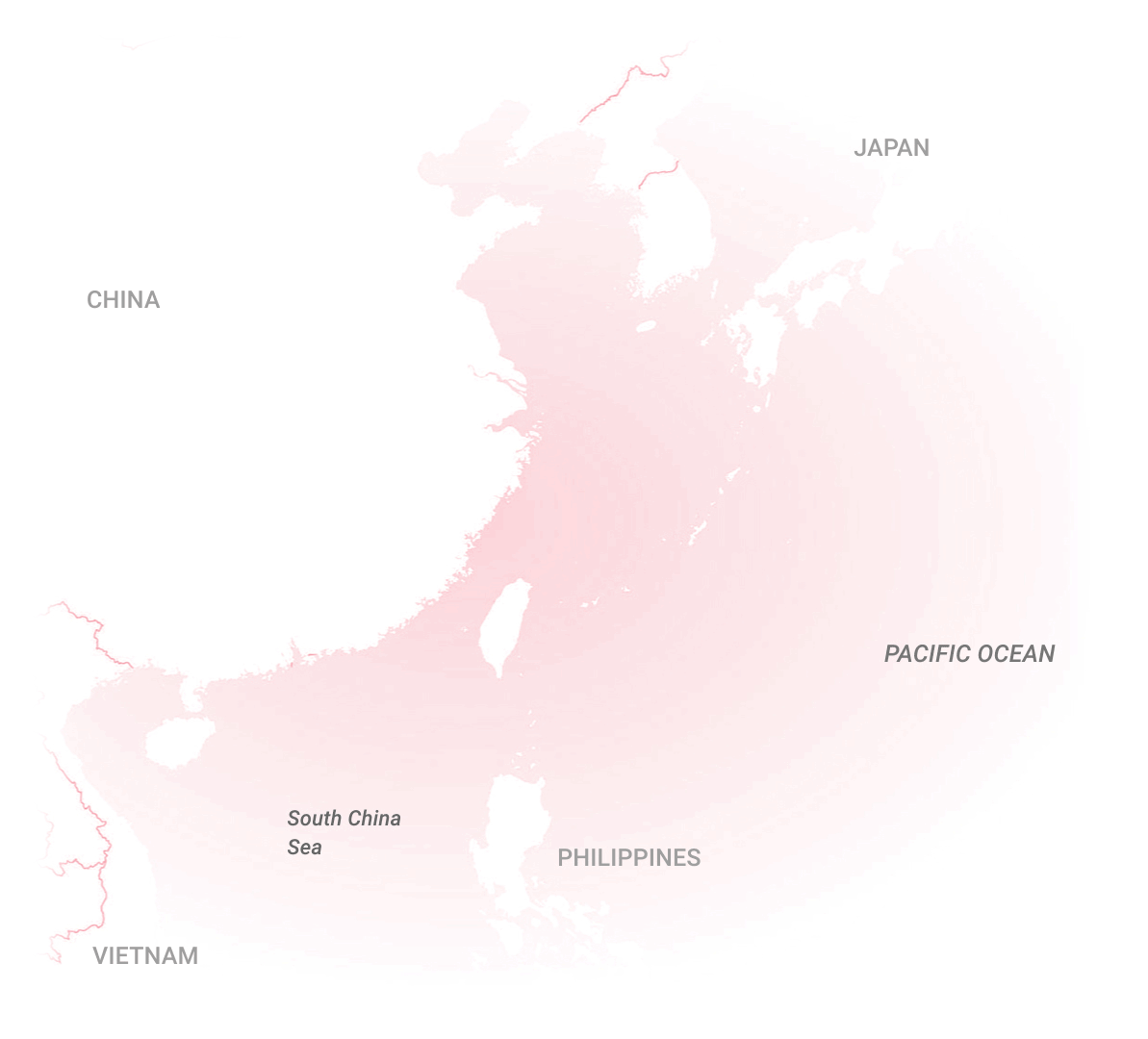
7 FEBRUARY
DR. LI WENLIANG DIES
Whistle-blower Dr Li Wenliang dies of the very disease he was trying to inform his peers of. The 34-year old ophthalmologist died at the place of his work - Wuhan Central Hospital. It sparked outrage on Chinese social media, as netizens circulated messages and images expressing anger, frustration, and grief. Dr Wenliang became an icon, an ordinary hero. In April, the Chinese government honoured Dr Li as a “martyr” - the highest civilian honour bestowed on a citizen killed while serving China. Francesca Cavallo, a New York Times best-selling author, created an illustrated book inspired by Dr Li.
CITIZENS START REPORTING,
SOME GO MISSING
A lawyer turned citizen journalist, Chen Qiushi, shares the plight at the hospitals in Wuhan. He reached Wuhan a day before the lock-down and visited the under-construction Huoshenshan Hospital and continued to report from the ground. On the 7th of February, his mother posted a video saying ‘he has been missing since the day before’. His friend then posted a video saying he has forcibly been quarantined.
As the grief and anger over the missing citizens and Dr Wenliang’s death grew stronger on social media, an article from Xu Zhangrun - “Viral Alarm: When Fury Overcomes Fear” came into circulation. The original article was published in July 2018, but the English translation of this polemical and passionate piece became a rage. It is believed that the Chinese professor (Xu Zhangrun) has been put under house arrest with no internet access.
Fang Bin, a local clothing salesman, posted a 40-minute video showing horrific scenes inside a hospital. He too has stopped responding to messages and calls.
“I am afraid. In front of me is the virus and behind me is the legal and administrative power of China.”
Chen Qiushi
(30.01.2020)


11 FEBRUARY
"COVID-19"
W.H.O. names the new virus as SARS-CoV-2 or
Severe Acute Respiratory Syndrome Coronavirus-2.
The W.H.O. said that the new name was chosen to avoid references to any specific geographical location, animal species, or group with regard to prevent any stigmatisation.
STEALTH TRANSMISSIONS TAKE TOLL
86 per cent of all infections were undocumented prior to the January 23 Wuhan travel shutdown. Per person, these undocumented infections were half (52 per cent) as contagious as documented infections, yet were the source of two-thirds of documented infections.
14 FEBRUARY
First Death In Europe
First death outside of Asia is reported in Paris. The man who died in Paris was from Hubei, the Chinese province at the centre of the outbreak. This was also the 4th death outside mainland China. So far, 12 cases were recorded officially.
17 FEBRUARY
Spike in cases in South Korea
Cases jump to 101. 73 occurrences in three days. By the 20th of February, a minimum of 100 cases was being reported each day.
19 FEBRUARY
Iran reports cases
2 cases reported on 19. By the 27th, the daily cases exceeded the 100-mark, and by the 3rd of March, a minimum of 500 infections were notified daily.
23 FEBRUARY
Italy Outbreak
The total number of cases was at 20 on the 21st. In the next five days, 433 confirmed cases emerge and by the 26th number of daily cases started to exceed 100.
26 FEBRUARY
Latin America
Brazil reports the first positive case in Sao Paulo. He returned home after spending two weeks in northern Italy’s Lombardy region on a work trip, where he contracted the contagious virus.
28 FEBRUARY
Sub-Saharan Africa
The first case of the coronavirus in sub-Saharan Africa confirmed in Nigeria. The patient was an Italian citizen who works in Nigeria and flew into the commercial city of Lagos from Milan on 25 February.
29 FEBRUARY
USA reports first death
The first report of a coronavirus-related death was in the Seattle area, although later it was discovered that two people who had died earlier also had the virus. Santa Clara County officials claimed that autopsies of two people who died on Feb 6 and Feb 17 showed novel coronavirus infections.
2 MARCH
Spain Outbreak
A total of 102 cases but the infection rate steadily rise from here on. In the next four 4 days, it reached a minimum of 100 cases and by the 13 March, it would exceed 1000 cases per day.
8 MARCH
Italy announces complete lockdown
Italy becomes the first European country to announce nationwide lockdown. 60m residents of the country are put under de-facto home quarantine. By this time it had become the worst-hit nation after China. It also raised questions about a modern nation, protective about individual freedom, adopting a lockdown of this scale.
A PANDEMIC
W.H.O. declares COVID-19 a pandemic.
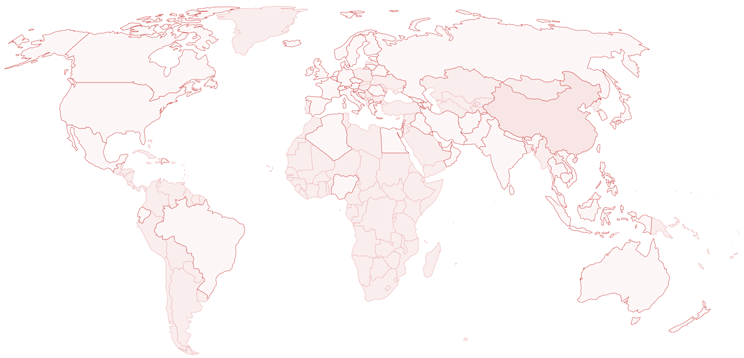
WORLD FIGURES
References
17th November a) Elizabeth C. Economy (29.06.18). The Great Firewall of China: Xi Jinping’s internet shutdown. The Guardian. b) Josephine Ma (13.03.20). Coronavirus: China’s first confirmed Covid-19 case traced back to November 17. South China Morning Post. c) W.H.O. Update (12.01.20). Novel Coronavirus – China. W.H.O. d) The Lancet (15.02.20). Clinical features of patients affected with Novel Coronavirus in Wuhan. The Lancet Journal.
10th December a) Jeremy Page, Wexin Fan and Natasha Khan (06.03.20). How It All Started: China’s Early Coronavirus Missteps. The Wall Street Journal. b) Josephine Ma (13.03.20). Coronavirus: China’s first confirmed Covid-19 case traced back to November 17. South China Morning Post.
27th December a) Jeanna Bryner (14.03.20). 1st known case of Coronavirus traced back to November in China. Livescience.com b) Video: China Daily (20.02.20). VIdeo: Zhang Jixian,who sounded the alarm #warning of a #virus outbreak. China Daily.
30th December a) Lily Kuo (11.02.20). Coronavirus: Wuhan doctor speaks out against authorities. The Guardian. b) 101 East (10.04.20). China : Truth in a Pandemic. Al Jazeera. c) China Daily Update (08.04.20). Timeline of China releasing information on COVID-19 and advancing international cooperation on epidemic response. China Daily. d) @CarlZha (07.02.20). Dr. Wenliang's Wechat Screenshots. Twitter. e) Alex Hannaford (16.03.20). The last days of Dr Li Wenliang, the Chinese coronavirus whistleblower. GQ UK.
31st December a) W.H.O. Update (05.01.20). Pneumonia of unknown cause – China. World Health Organisation. b) Chris Buckley & Steven Lee Myers (07.02.20). As New Coronavirus Spread, China’s Old Habits Delayed Fight. The New York Times.
1st January a) 101 East (10.04.20). China : Truth in a Pandemic. Al Jazeera. b) Du Juan (01.01.20). Wuhan wet market closes amid pneumonia outbreak. China Daily. c) W.H.O. Update (05.01.20). Pneumonia of unknown cause – China. World Health Organisation. d) Chris Buckley & Steven Lee Myers (07.02.20). As New Coronavirus Spread, China’s Old Habits Delayed Fight. The New York Times.
3rd January a) 101 East (10.04.20). China : Truth in a Pandemic. Al Jazeera. b) Josh Rudolph (06.02.20). Li Wenliang’s “Admonishment Notice”. China Digital Times.
4th January a) Jane Qiu (11.03.20). How China’s ‘Bat Woman’ Hunted Down Viruses from SARS to the New Coronavirus. Scientific American. b) Dr. Shi Zhengli & Team (03.02.20). A pneumonia outbreak associated with a new coronavirus of probable bat origin. Nature.
9th January a) Al Jazeera via Reuters (11.01.20). China reports first death from mysterious outbreak in Wuhan. Al Jazeera. b) Chris Buckley (07.02.20). Chinese Doctor, Silenced After Warning of Outbreak, Dies From Coronavirus. The New York Times.
12th January a) Shanghai Public Health Clinical Center & School of Public Health (05.01.20). A new coronavirus associated with human respiratory disease in China. GenBank, National Center for Biotechnology Information. b) JHU Staff (--). Hubei Timeline. Johns Hopkins University. c) @arambaut (19.01.20). Preliminary phylogenetic analysis of 11 nCoV2019 genomes. via Virological.com d) W.H.O. Update (12.02.20). Novel Coronavirus China. World Health Organisation.
19th January a) Kristin Huang (05.02.20). Coronavirus: 10 new cases confirmed, 30 more suspected in Wuhan after thousands attend Lunar New Year banquet. South China Morning Post. b) Straits Times staff (07.02.20). Coronavirus: Wuhan community identifies 'fever buildings' after 40,000 families gather for potluck. Straits Times. c) Ding Jie, He Jingwei & Mo Yelin (11.02.20). Weeks After Massive Local Party, Wuhan Neighborhood Remain in the Dark. Caixin.
21st January a) JHU Staff (--). Hubei Timeline. Johns Hopkins University. b) VIdeo: CGTN Frontline (20.01.20). Experts confirmed coronavirus human-to-human transmission. CGTN. c) W.H.O. Update (21.01.20). Novel Coronavirus (2019-nCoV) Situation report-1. World Health Organisation. d) Morgan McFall-Johnsen & Molly Secon (14.03.20). Scientists are racing to calculate a crucial measure of the coronavirus' spread. Business Insider India.
22nd January a) Maggie Hiufu Wong (10.01.20). 3 billion journeys: World's biggest human migration begins in China. CNN. b) Swapneil Parikh, Maherra Desai and Rajesh Parikh (11.04.20). Had China not been so strict about Wuhan, coronavirus would have stayed in Wuhan. The Print. c) Josephine Ma & Zhuang Pinghui (26.02.20). 5 million left Wuhan before lockdown, 1,000 new coronavirus cases expected in city. South China Morning Post. d) Jin Wu, Weiyi Cai, Derek Watkins & James Glanz (22.03.20). How the virus got out. The New York Times. e) Burton H. Singer (27.02.20). Impact of international travel and border control measures on the global spread of the novel 2019 coronavirus outbreak. PNAS. f) Giulia Pullano, Francesco Pinotti, Eugenio Valdano, Pierre-Yves Boëlle, Chiara Poletto & Vittoria Colizza (30.01.20). Novel coronavirus (2019-nCoV) early-stage importation risk to Europe, January 2020. National Center for Biotechnology Information. g) Matteo Chinazzi (24.04.20). The effect of travel restrictions on the spread of the 2019 novel coronavirus (COVID-19) outbreak. Sciencemag. h) Shengjie Lai & Andrew Tatem (25.02.20). Preliminary risk analysis of 2019 novel coronavirus spread within and beyond China. Worldpop. i) CGTN staff (27.02.20). Five million people left Wuhan before the lockdown, where did they go?. CGTN.
23rd January a) Lily Kuo (11.02.20). Coronavirus: Wuhan doctor speaks out against authorities. The Guardian. b) BBC Staff (23.01.20). China coronavirus: Lockdown measures rise across Hubei province. BBC. c) Xiao Xiaowai (24.04.20). Demystifying the hospital built in 10 days. CGTN. d) William Zheng and Laurie Chen (28.01.20). Live from Wuhan: millions tune in to watch China build coronavirus hospitals. CGTN. e) The Lancet (15.02.20). Clinical features of patients affected with Novel Coronavirus in Wuhan. The Lancet Journal. f) John Cohen (26.01.20). Wuhan seafood market may not be source of novel virus spreading globally. Sciencemag. g) Haroon Siddique, Hannah Ellis-Peterson & Ben Doherty (26.01.20) China promises tougher crackdown to stop spread of disease – as it happened. The Guardian.
24th January a) W.H.O. Newsroom (28.01.20). WHO, China leaders discuss next steps in battle against coronavirus outbreak. World Health Organisation. b) Andrew Joseph (30.01.20). W.H.O. Declares Coronavirus Outbreak a Global Health Emergency. Scientific American. c) W.H.O. press briefing (30.01.20). International Health Regulations (IHR) Emergency Committee regarding the outbreak of novel coronavirus (2019-nCoV). World Health Organisation.
30th January a) Jin Wu, Weiyi Cai, Derek Watkins & James Glanz (22.03.20). How the virus got out. The New York Times. b) BBC staff (02.02.20). Coronavirus: First death outside China reported in Philippines. BBC. c) Johns Hopkins University. COVID-19 Dashboard. JHU.
31st January a) Julia Belluz (18.02.20). The coronavirus cruise ship quarantine is a scary public health experiment. Vox. b) Tim Stickings (07.02.20). Were coronavirus cruise ship passengers all infected by ONE passenger? Dailymail.
4th February a) BBC Staff (07.02.20). Li Wenliang: Coronavirus death of Wuhan doctor sparks anger. BBC. b) Chris Buckley (07.02.20). Chinese Doctor, Silenced After Warning of Outbreak, Dies From Coronavirus. The New York Times. c) Andrew Green (18.02.20). Obituary: Dr. Li Wenliang. The Lancet. d) Alicia Lee (15.04.20). New children's book tells the story of Dr. Li Wenliang, who sounded the alarm on coronavirus. CNN. e) via Global Voices (07.02.20). Coronavirus death of whistleblower Li Wenliang sets Chinese social media on fire. Global Voices.
7th February a) BBC Staff (14.02.20) Coronavirus: Why have two reporters in Wuhan disappeared? BBC. b) Derek Hawkins (09.02.20). He ducked Chinese authorities to report on coronavirus in Wuhan, then he disappeared. The Washington Post. c) Xu Zhangrun, translated and annotated by Geremie R. Barmé (10.02.20). Viral Alarm: When Fury Overcomes Fear. China File. d) SCMP staff (14.02.20). Fang Bin is second Chinese citizen journalist to vanish while reporting from coronavirus epicentre. South China Morning Post.
9th February a) W.H.O. staff (11.02.20). Novel Coronavirus(2019-nCoV)Situation Report –22. World Health Organisation. b) W.H.O. Staff (11.02.20). WHO Director-General's remarks at the media briefing on 2019-nCoV. World Health Organisation.
11th February a) Jeffrey Shaman (23.03.20).'Stealth Transmission' Fuels Fast Spread of Coronavirus Outbreak. Columbia University.
14th February-8th March. a) NYT Staff (15.02.20) U.S. Says It Will Evacuate Americans From Cruise Ship. The New York Times. b) Johns Hopkins University. COVID-19 Dashboard. JHU. c) Derrick Bryson Taylor (12.05.20) How the Coronavirus Pandemic Unfolded: a Timeline. The New York Times. d) BBC Staff (01.03.20) Coronavirus: US confirms first death, in Washington state. BBC. e) Thomas Fuller & Mike Baker (22.04.20). Coronavirus Death in California Came Weeks Before First Known U.S. Death. The New York Times. f) Jason Horowitz (09.03.20). Italy Announces Restrictions Over Entire Country in Attempt to Halt Coronavirus. The New York Times.
11th March a) W.H.O. Update (11.03.20). WHO Director-General's opening remarks at the media briefing on COVID-19. World Health Organisation. b) W.H.O. Update (11.03.20). WHO characterizes COVID-19 as a pandemic. World Health Organisation.



![[转发ENG SUB] Chen Qiushi: Wuhan is short of test kits, beds; the outbreak is serious](https://i.ytimg.com/vi/7AI3R41dGnU/mqdefault.jpg 1x, https://i.ytimg.com/vi/7AI3R41dGnU/mqdefault.jpg 2x)
